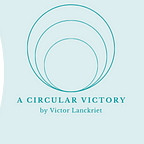The Importance of Product Design
Hi all and welcome back to the 17th blog post of a Circular Victory. Last week we talked about the concept of “voting with your wallet” and how that gives power to consumers to help drive the changes that they want to see in the market. To find out more about that, you can go back and read blog post 16.
Today, we are going to discuss the importance of product design in the evolution towards the Circular Economy.
Product Design
When we want to move to a fully Circular Economy, it is imperative that we don’t get stuck in reactive thinking. Reactive thinking is not sufficient to make a Circular Economy work. In a linear economy, like we largely have today, this is not as important. Products can simply go to the landfill at the end of their lifetime, so we don’t need to worry about this part of the product’s existence much. We can design products with only their use in mind.
In a Circular Economy, products can no longer become waste. Thus it is important to know how we are going to deal with a product at the end of its lifetime. This is where we need to start thinking proactively. At the very beginning of a product’s lifetime, at the design stage, we already need to figure out how the product will enter the cycle again. While it is possible to reuse and recycle any product to a certain degree, only thoughtfully and proactively designed products can enter the cycle again the way the Circular Economy needs them to.
This is why product design is an absolutely crucial step in a Circular supply chain. During this step, designers need to think about the Circular lifecycle of the product. By thinking about the Circular strategies, designers can think about how to design Circularly efficient products. Remember the Circular Strategies?
- Reduce
- Reuse
- Refurbish
- Repair
- Recycle
If we think about these strategies during the design phase, we can proactively question how to optimize a product for each of these stages.
Reduce -> How can we reduce the number of products needed? Can we move away from single-use? Can we design a longer lasting product?
Reuse -> How can this product be reused? Can it serve multiple purposes? Can we make it easier for this product to be used second hand?
Refurbish -> How can we design a product that is easier to refurbish? How can we make this product easier to upgrade? Can we make it easier to upgrade individual parts to make a longer lasting product?
Repair -> How can we make it easier to repair this product? How can we make it easier to access and replace individual parts? Can we provide guidance on how to repair our products?
Recycle -> How can we ensure the recyclability of our product? Can we avoid mixing different types of materials? Are the materials we are using recyclable? Who is going to recycle it?
By paying attention to these types of questions and the Circular strategies, designers can have a significant impact on a product’s entire lifetime. These questions and strategies can also help designers to create a proactive plan for a product’s lifecycle, rather than just designing a product and then sending it out into the world. They can already think about agreements that need to be in place in order to get products to the right partners for recycling, for example. Or evaluate the need to involve repairment people in the process of the product.
Conclusion
Designers can play a major role in the evolution towards a Circular Economy. By thoughtfully designing products, with the end of life in mind, as well as considering the Circular strategies, they can design products that will have a much more positive impact on the environment. And with today’s trends, creating more ecological products will also be thoroughly appreciated by the public, of course!
